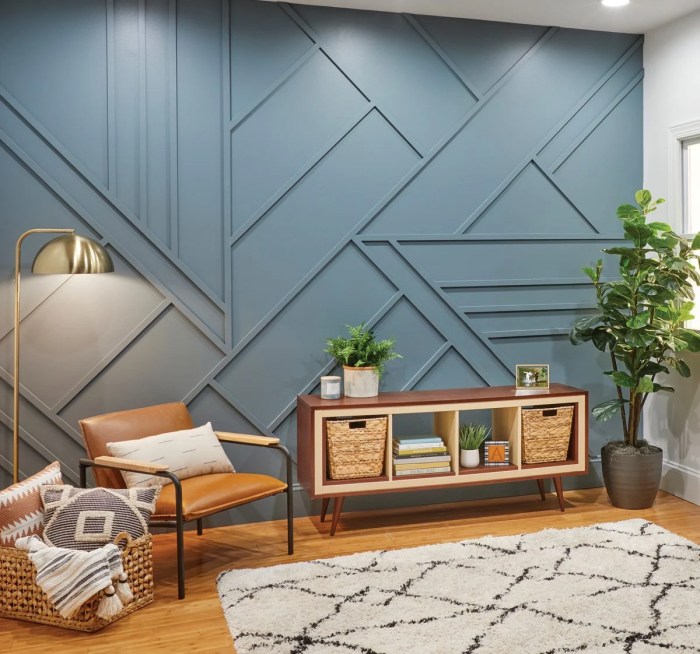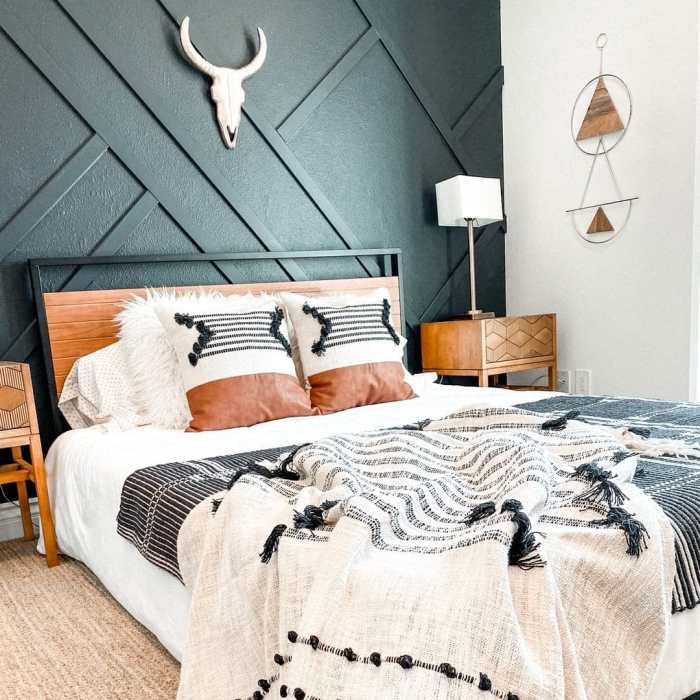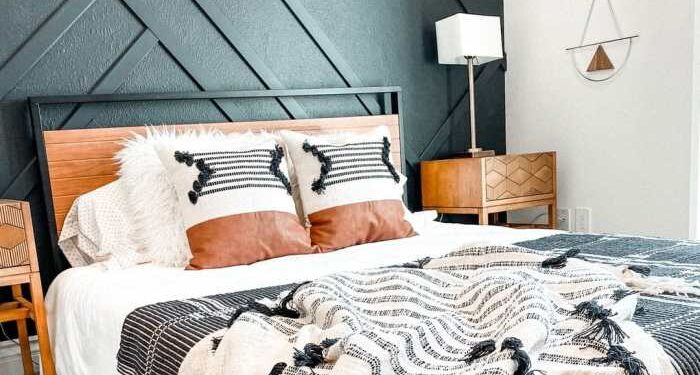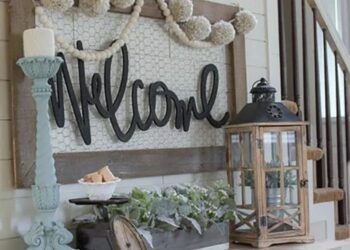Kicking off with Accent Walls: When, Where, and How to Use Them, this opening paragraph is designed to captivate and engage the readers, providing a clear and interesting overview of the topic.
The following paragraph will delve into the specifics of when, where, and how accent walls can be effectively used in interior design.
When to Use Accent Walls

Accent walls are a popular design choice that can add a touch of personality, depth, and visual interest to a space. They are used to create a focal point or highlight a specific area within a room, breaking up the monotony of a single color scheme.
Here are some key points to consider when deciding when to use accent walls:
Purpose of Accent Walls
Accent walls serve as a way to bring attention to a particular area or feature in a room. They can help define a space, create visual interest, and add depth and dimension to the overall design. By using a bold or contrasting color, texture, or pattern on one wall, you can instantly transform the look and feel of a room.
Rooms Suitable for Accent Walls
- Living Room: Accent walls can be used behind the sofa or as a backdrop for a fireplace to create a focal point in the living room.
- Bedroom: In the bedroom, an accent wall behind the headboard can add a pop of color or pattern to the space.
- Dining Room: A bold accent wall in the dining room can set the tone for the space and enhance the dining experience.
- Home Office: Adding an accent wall in a home office can boost creativity and productivity by providing a visually stimulating environment.
Examples of Effective Accent Walls
- Using a dark, dramatic color on an accent wall to create a cozy reading nook in the living room.
- Installing a textured wallpaper on an accent wall in the dining room to add elegance and sophistication to the space.
- Painting an accent wall in a bright, vibrant hue in the home office to energize the workspace and inspire creativity.
Enhancing Aesthetic with Accent Walls
Accent walls can enhance the overall aesthetic of a space by adding visual interest, depth, and personality. They can tie together different elements of a room, highlight architectural features, or create a sense of balance and harmony in the design.
Whether you choose a bold color, striking pattern, or unique texture, accent walls have the power to transform a room and make a lasting impression.
Where to Use Accent Walls
Choosing the right wall for an accent wall is crucial to make a visual impact in a room. Typically, the wall opposite the entrance or one with architectural features such as a fireplace or alcove makes an excellent choice for an accent wall.
Comparing Wall Colors and Patterns
When selecting colors for accent walls, consider shades that complement the existing color scheme of the room. Bold and vibrant colors like deep blue, emerald green, or rich red can make a statement, while subtle tones like soft grey or muted pastels provide a more understated look.
Patterns such as geometric designs, stripes, or floral motifs can also add visual interest to accent walls.
Creating Focal Points
Accent walls serve as focal points in a room, drawing attention and creating visual interest. They can highlight a specific area such as a bed in a bedroom, a dining table in a dining room, or a seating arrangement in a living room.
By choosing the right wall and color, you can enhance the overall aesthetic appeal of the space.
Incorporating Accent Walls in Small Spaces
In small spaces, accent walls can be used strategically to add depth and dimension without overwhelming the room. Opt for lighter colors to make the space appear larger, or use a bold color on a single wall to create a striking focal point.
Consider vertical stripes to visually elongate the room or a mirror accent wall to reflect light and create the illusion of more space.
How to Use Accent Walls
When incorporating accent walls into your space, it is essential to consider various factors to achieve a cohesive and visually appealing look. From selecting the right color scheme to arranging furniture around the accent wall, these tips will help you make the most of this design element.
Selecting a Color Scheme
Before painting or wallpapering an accent wall, carefully choose a color scheme that complements the rest of the room. Consider the existing colors in the space and opt for a shade that will stand out without overpowering the room. You can use color theory principles to create a harmonious balance, such as choosing complementary or analogous colors.
Design Techniques for Painting or Wallpapering
- For painting an accent wall, consider using bold and contrasting colors to make a statement. You can also opt for different finishes like matte or glossy to add texture.
- When wallpapering, choose a pattern that suits your style and the overall aesthetic of the room. Make sure to align the pattern correctly and avoid overwhelming the space with too busy designs.
Organizing Furniture and Decor
Arrange furniture around the accent wall to highlight its presence without overshadowing it. Consider placing a focal point, such as a sofa or a piece of art, against the accent wall to draw attention to it. Use decor elements like throw pillows, rugs, or curtains to tie the accent wall with the rest of the room.
Creating a Harmonious Balance
- Ensure that the accent wall complements the overall style and theme of the room. Avoid creating a stark contrast that disrupts the flow of the space.
- Balance the colors and textures of the accent wall with the surrounding walls and decor. Incorporate elements that echo the accent wall's color or pattern throughout the room for a cohesive look.
Closing Notes

In conclusion, accent walls offer a versatile and creative way to enhance the aesthetics of any space, providing a focal point and adding visual interest.
User Queries
What is the purpose of accent walls in interior design?
Accent walls serve to create visual interest, highlight architectural features, or define a space within a room.
How can accent walls enhance the overall aesthetic of a space?
By using contrasting colors or patterns, accent walls can add depth, create focal points, and tie together the design elements of a room.
What are some ideas for incorporating accent walls in small spaces?
In small spaces, consider using a bold color on one wall to make the room feel larger, or opt for a subtle pattern to add texture without overwhelming the space.













